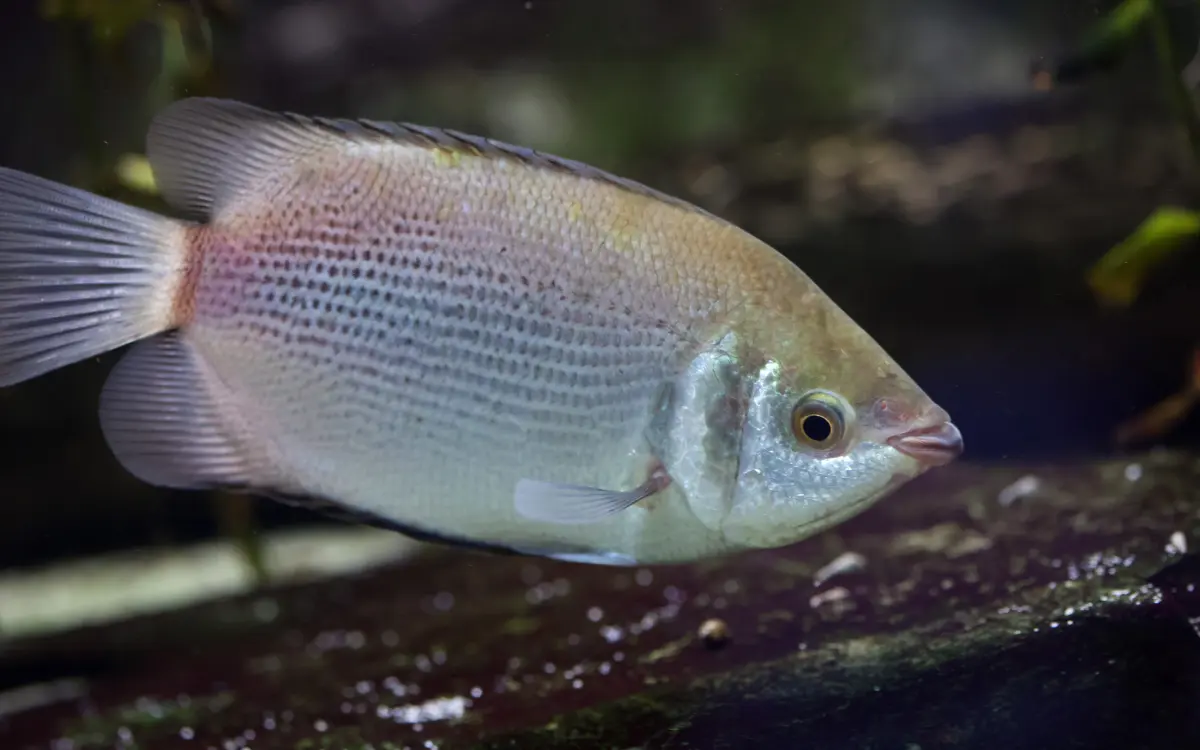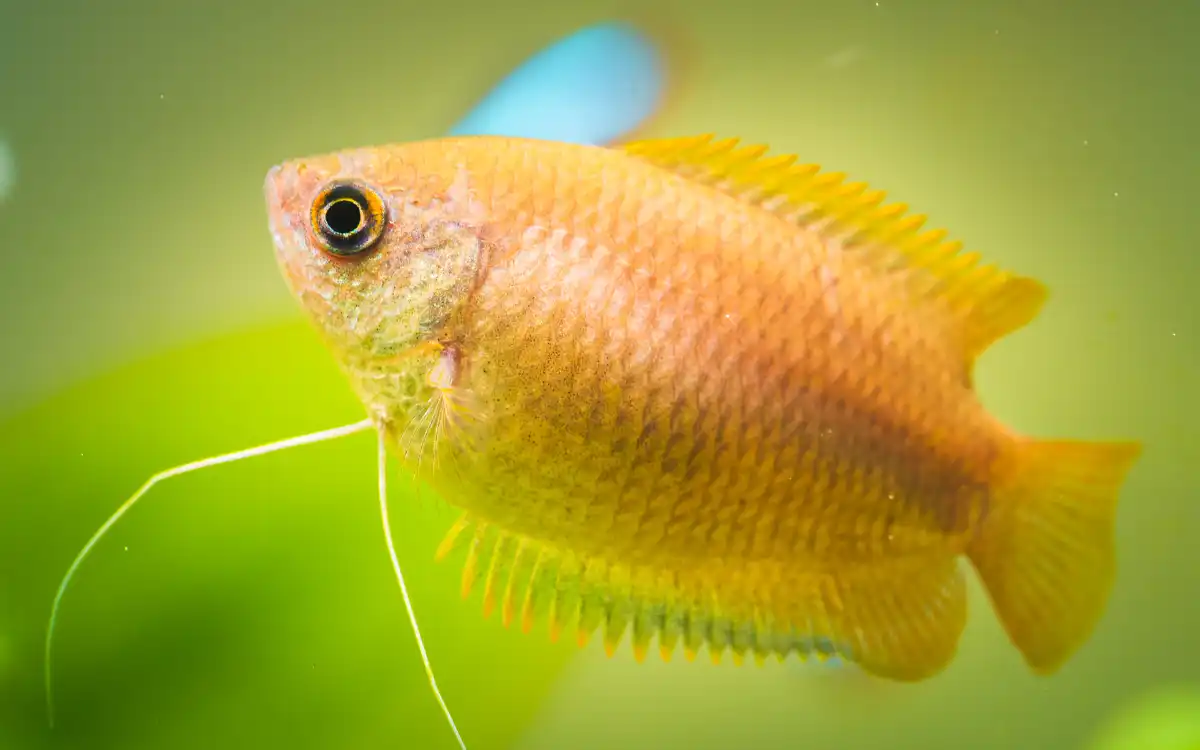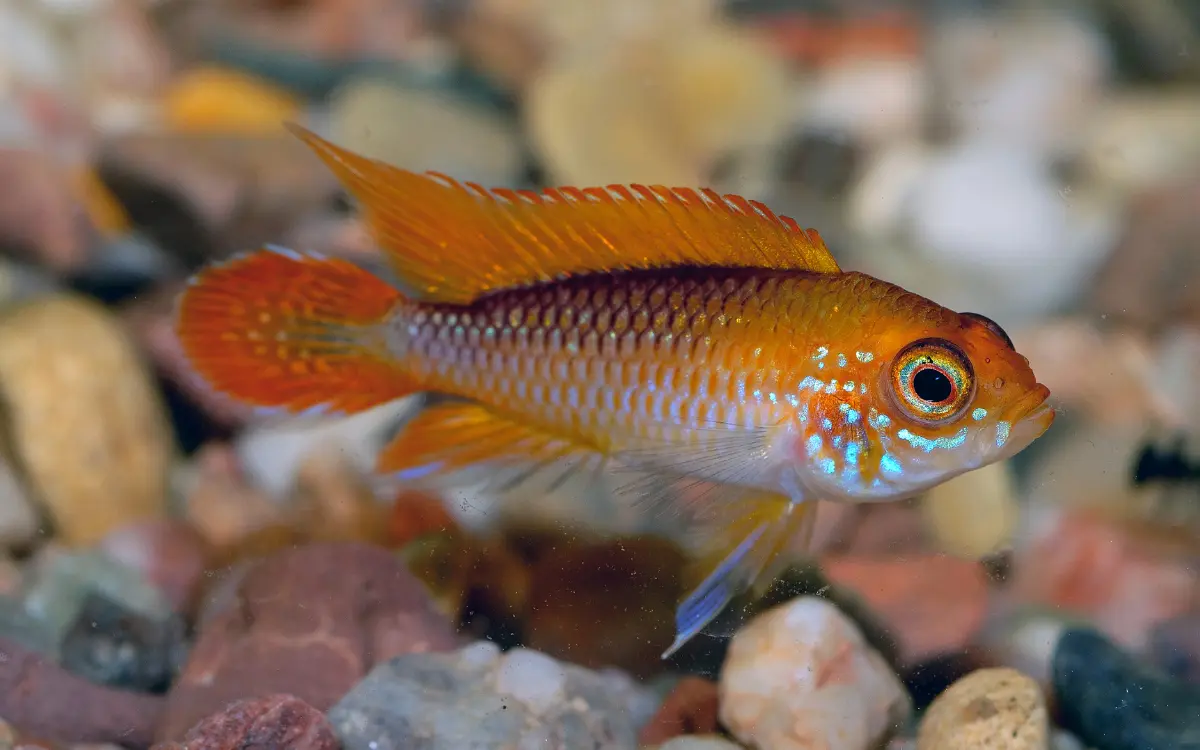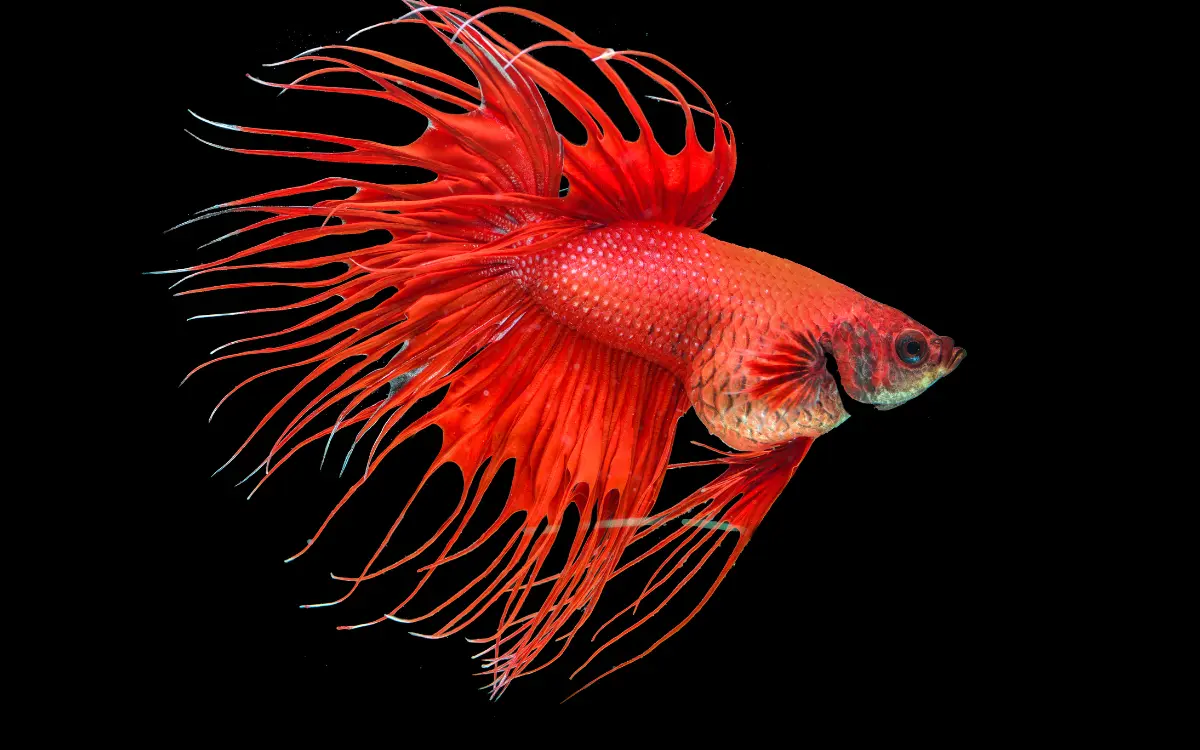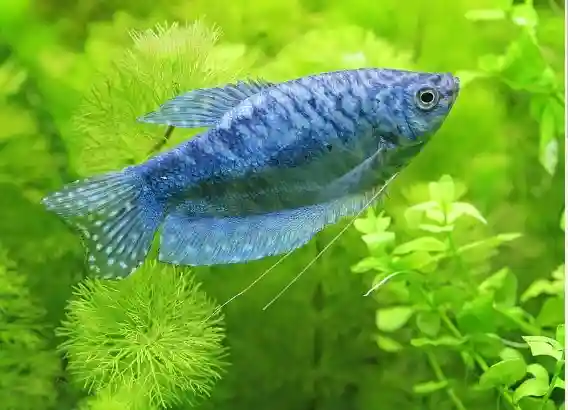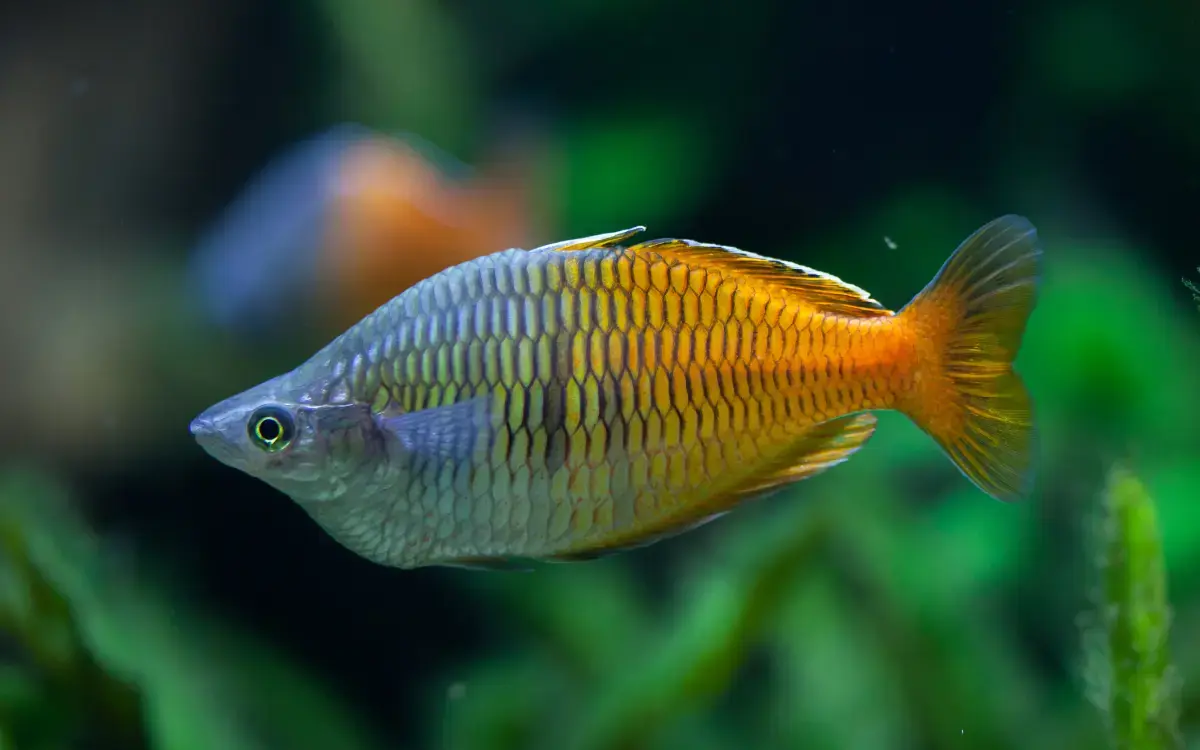9 Types of Oscar Fish: Color, Behavior & Best Choices
Oscar fish are the big personalities of the freshwater aquarium world. If you’ve ever seen one follow your finger across the glass or beg for food like a puppy, you know exactly what I mean. They’re smart, curious, and full of attitude in the best way.
In this guide, I’ll walk you through the different types of Oscar fish, what makes each one special, and how to care for them. Whether you’re just getting into fishkeeping or already have a few tanks, Oscars are the kind of fish that leave a lasting impression.
Why People Love Oscar Fish (Including Me)

First off, let’s talk about why so many aquarists — myself included — love these guys. Oscars aren’t just pretty fish. They recognize their owners, get grumpy when ignored, and even rearrange tank décor to suit their mood.
They’re native to South America and can live for 10–15 years. And when it comes to size? These aren’t small fry. Most grow up to 12–14 inches long, so they need space to thrive.
But beyond personality, their wide variety of colors and patterns is what really draws people in. Let’s look at the most popular types.
10 Beautiful Oscar Fish Types (And What Makes Them Stand Out)
1. Tiger Oscar
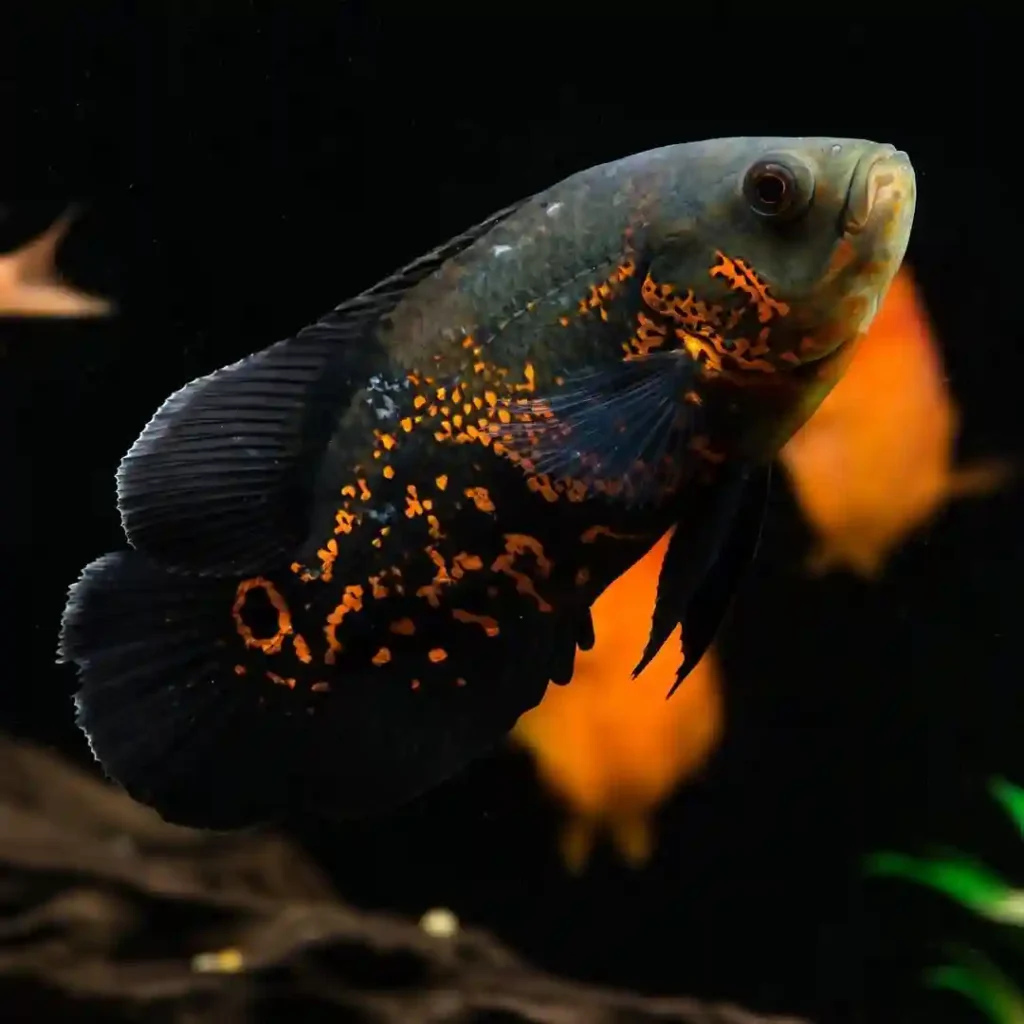
The Tiger Oscar is easily the most recognizable and widely kept Oscar variety — and for good reason. Its striking pattern of bright orange or red blotches over a dark brown or black body gives it the “tiger” nickname. No two are exactly alike, which adds to their charm.
As juveniles, their patterns might appear dull or uneven, but with age and good care, they become stunning display fish. Their bold personality also makes them very interactive — many Tiger Oscars follow their owners around or beg for food like a dog.
Highlights:
- Vibrant red or orange patterns on a dark body
- Fast growers, often reaching 12 inches+
- Very hardy and beginner-friendly
- Known for being outgoing and playful
💡 Pro Tip: Tiger Oscars often change pattern slightly as they grow — don’t worry if their markings look different over time. That’s part of the fun!
2. Red Oscar
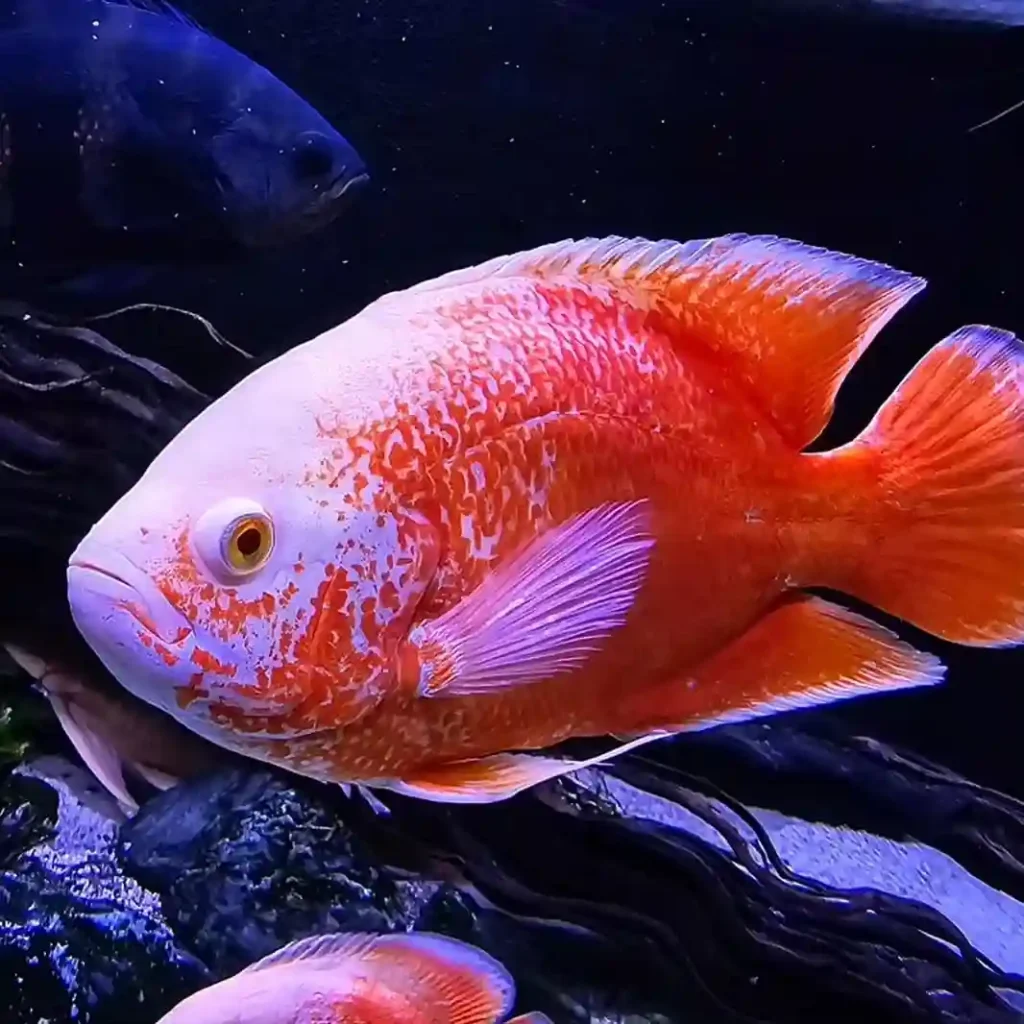
Red Oscars are bold and beautiful. Their body is usually covered with vibrant red or crimson shades that may fade into darker tones near the fins. Some have more uniform red coloring, while others may show some patchiness.
Diet plays a big role in how vivid their color remains. Without proper care, they can fade over time — but with the right food and clean water, they practically glow.
Key Traits:
- Ranges from bright red to burgundy
- Some develop near-solid red bodies
- Best displayed against darker tank backgrounds
- Friendly and active, often one of the most responsive types
💡 Pro Tip: For rich, lasting red color, feed them color-boosting foods like krill, shrimp, and pellets containing astaxanthin.
3. Albino Oscar
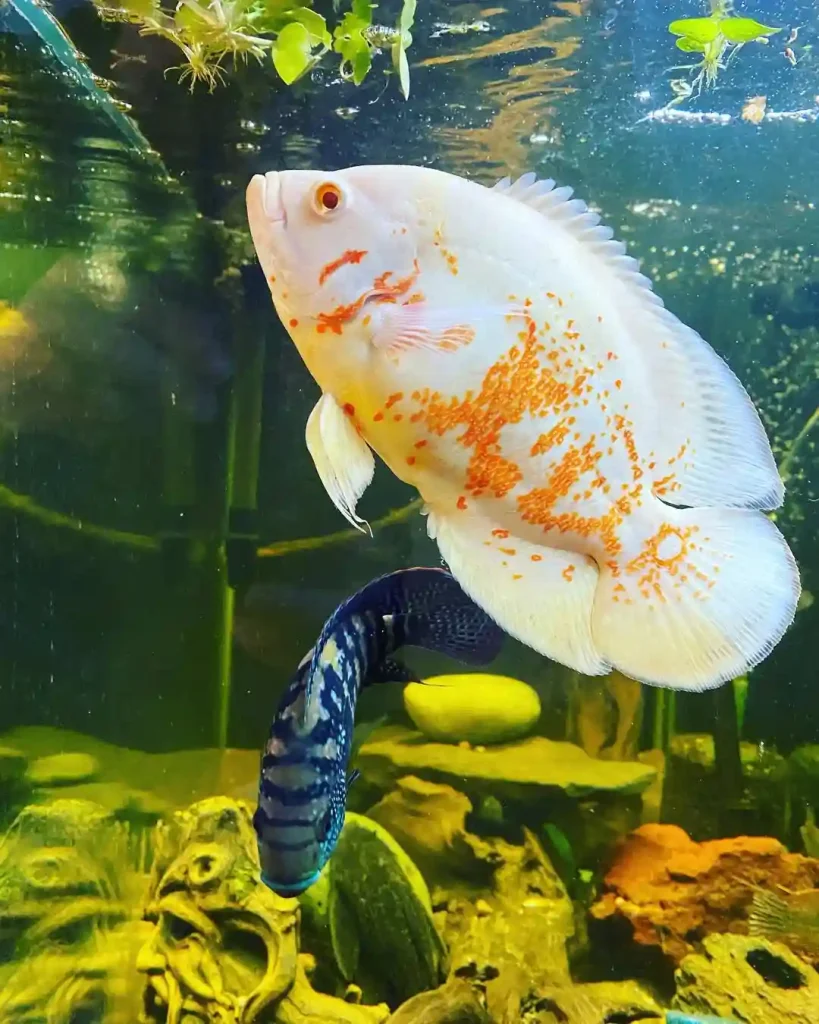
Albino Oscars are striking for their pale, cream-colored bodies and pink or red eyes. Unlike most fish, they lack melanin, which gives them their soft appearance. Many display beautiful orange or red marbling across their body, especially as they age.
However, Albino Oscars can be a little more sensitive to bright light and poor water conditions. They still have that classic Oscar personality — just with a unique look that really stands out in a well-planned tank.
What to Know:
- Cream to white bodies with pink eyes
- Red/orange blotches appear with age
- Slightly more light-sensitive than other varieties
- Still tough and active, just a bit more visually delicate
💡 Pro Tip: Use floating plants or provide shaded tank areas to reduce light exposure — it helps protect their eyes and keeps them comfortable.
4. Lemon Oscar

Lemon Oscars are a bright, cheerful twist in the Oscar world. Their solid yellow bodies range from pale pastel to bold canary shades, depending on genetics, lighting, and diet. Unlike Albinos, they don’t have red eyes — which often makes people think they’re just “gold-colored Oscars.”
They’re not as common in local pet stores but are gaining popularity for their vibrant look. However, keeping their yellow color strong takes a little effort — poor diet or dim lighting can dull their appearance over time.
What Makes Them Special:
- Eye-catching yellow bodies that brighten up any tank
- Usually have little to no black or red markings
- Same curious, interactive behavior as any other Oscar
💡 Pro Tip: Feed foods rich in carotenoids (like spirulina flakes or paprika-infused pellets) and use warm-toned lights to help them stay golden.
5. Blue Oscar
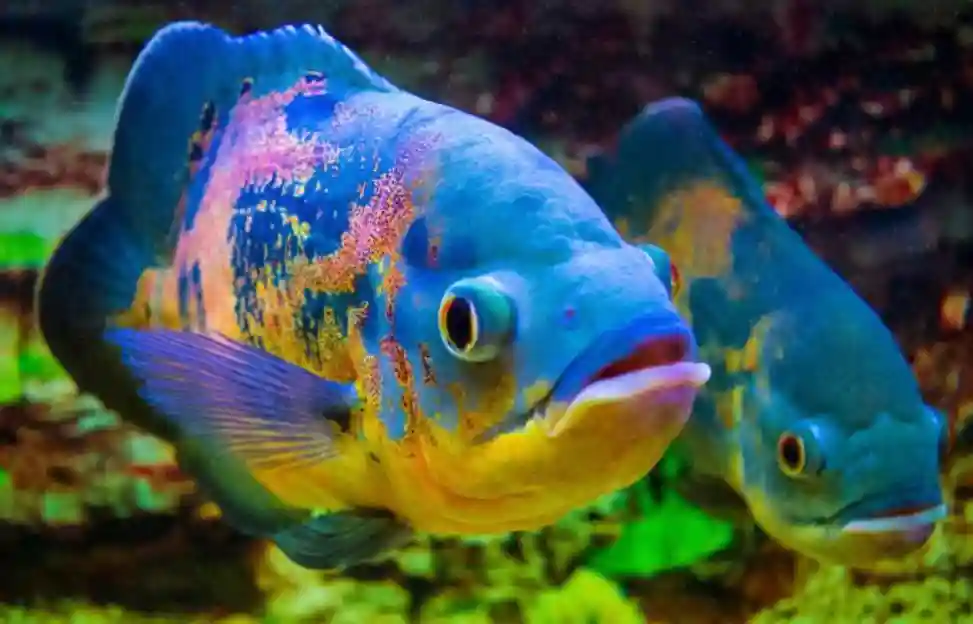
Blue Oscars are among the rarer and more eye-catching varieties in the hobby. Their coloration ranges from shimmering steel blue to deep navy tones, sometimes with a silvery or metallic sheen that glows under the right lighting. Unlike Tiger or Red Oscars, the blue hue doesn’t come from wild populations — it’s the result of careful selective breeding.
These fish can have patches of darker markings or even subtle highlights of green or grey, especially as they mature. Each one looks a little different depending on genetics and tank conditions, which makes them feel even more unique.
What to Expect with Blue Oscars:
- Color can vary depending on light, stress, and age. Some may look more blue-grey under regular lighting but glow electric blue under LEDs.
- Their base color may darken or lighten over time, so don’t worry if your juvenile fish doesn’t look fully “blue” right away — they often intensify as they grow.
- Less common in local fish stores. You might have to visit a specialty breeder or order online.
Care Tips Just for Blues:
Blue Oscars tend to be a bit more sensitive to water quality than some of the hardier varieties. If the water parameters are off, their colors may fade or look dull.
- Keep nitrates under 30 ppm, and perform regular water changes (25–30% weekly).
- Invest in good filtration — a canister filter is ideal.
- Use LED lighting with cool tones to enhance their blue shimmer.
💡 Pro tip: A black or dark blue background can make their color pop. Avoid busy décor or gravel that might distract from their subtle hues.
6. Green Oscar
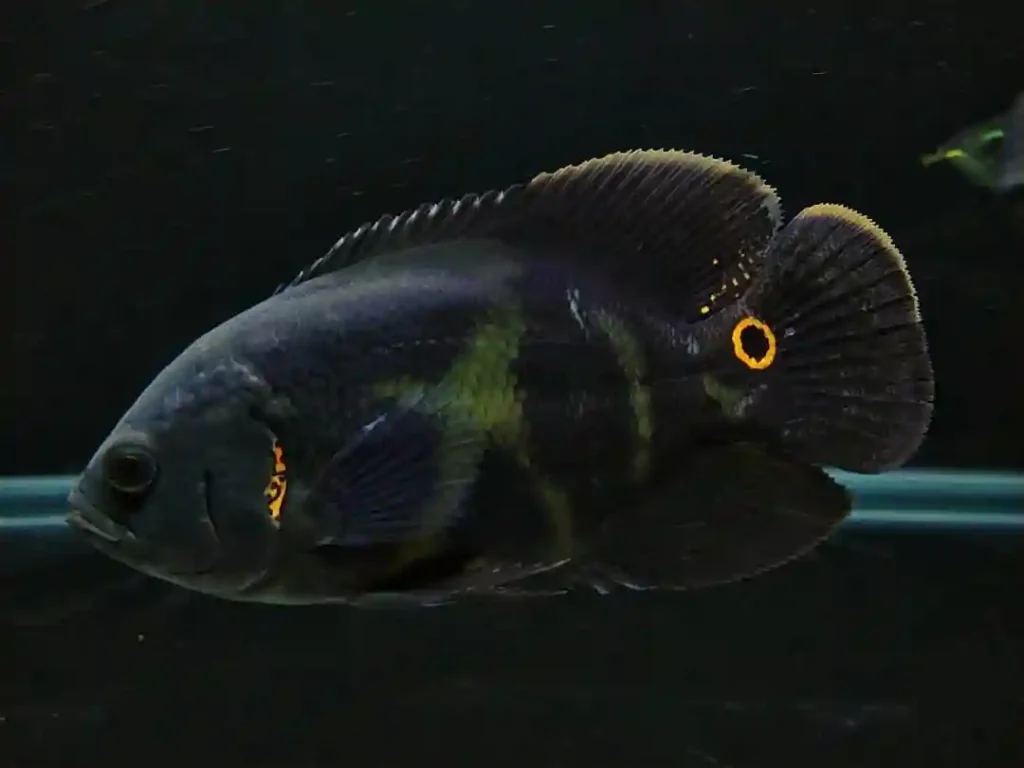
Green Oscars are among the rarest in the hobby and are often misunderstood. Their color isn’t bright green like a parrot, but more of an earthy olive or moss tone, often mixed with yellows, browns, and blacks. Depending on lighting and angle, they can shift in appearance — sometimes looking bronze, other times slightly gray-green.
They blend well in planted or nature-style tanks and offer a unique look that stands out quietly rather than boldly.
What to Know:
- Earthy, natural-looking tones
- Often develop intricate marbling or spotted patterns
- May not be sold as “Green Oscars” — sometimes labeled as “Wild Color” or “Olive Oscars”
💡 Pro Tip: Use driftwood, rocks, and darker plants to highlight their natural tones and help them feel more at home.
Read also: 20 Types of Butterflyfish: A Complete Guide
7. Copper Oscar
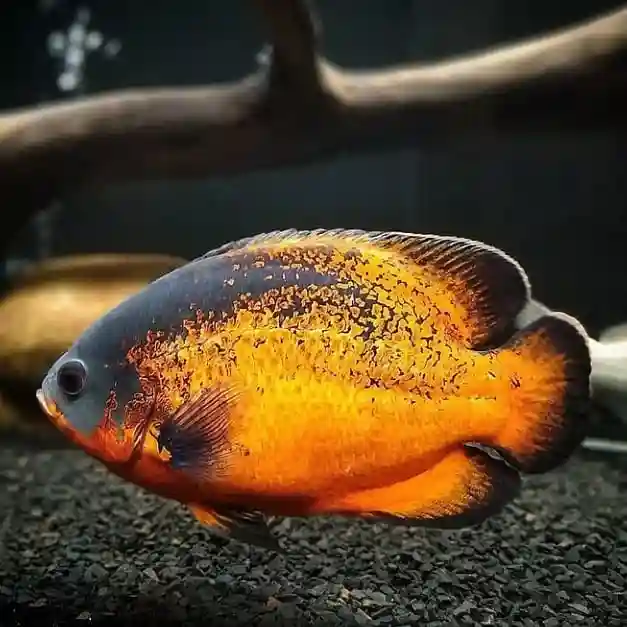
If you want something that glows under the light, Copper Oscars are your fish. These beauties shine in shades of bronze, reddish-gold, and copper — often with reflective scales that shimmer as they swim. Some even have a light metallic patina that changes slightly with their movement.
They’re stunning under soft, warm lighting and develop deeper tones with age. However, not all Copper Oscars are created equal — look for ones with rich, even coloring and healthy fins.
Special Features:
- Metallic sheen in copper, bronze, or rust tones
- Reflective scales that catch and bounce light
- Changes slightly as they age — often darkening in color
💡 Pro Tip: Avoid bright white lights — soft, amber-toned lighting enhances their metallic glow and keeps them looking their best.
8. Veil Tail Oscar
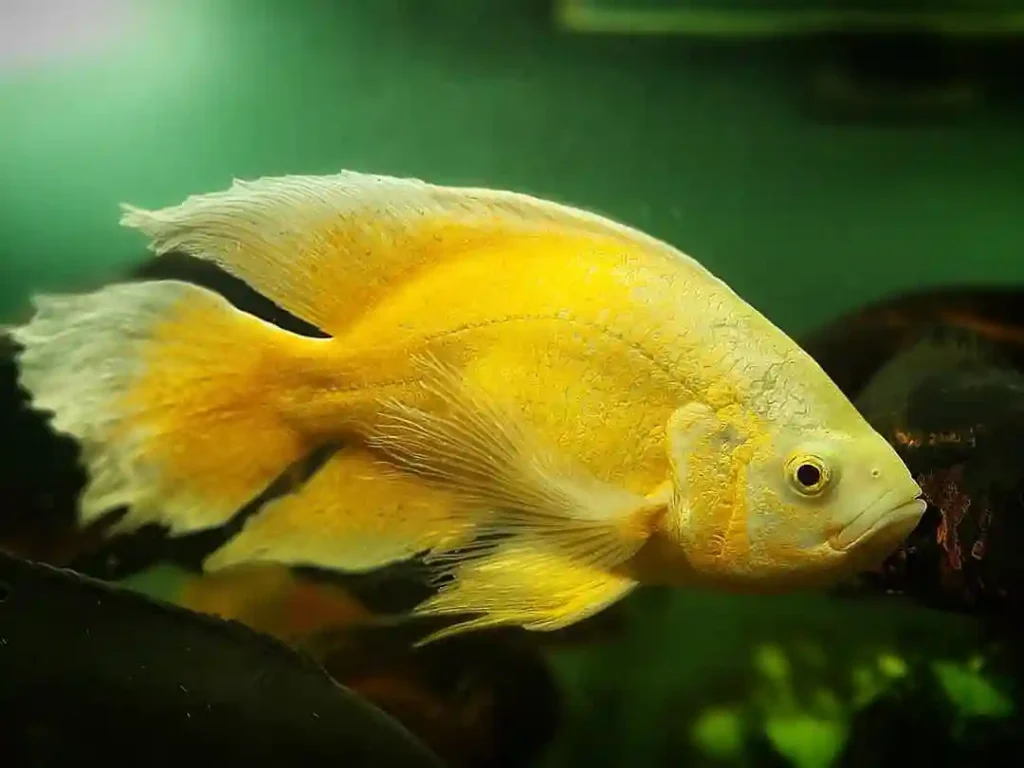
Veil Tail Oscars are all about finesse. While their body size is the same as regular Oscars, their fins are longer, flowing, and much more delicate. The elongated dorsal, caudal, and anal fins give them a majestic appearance as they glide through the water.
They’re available in many color types — like Veil Tail Tiger or Veil Tail Red Oscars. But those long fins come with a tradeoff: they’re more prone to damage, and they swim a bit slower than their short-finned siblings.
What to Consider:
- Flowing, elegant fins that need extra protection
- Prefer tanks with gentle current and soft décor
- More likely to get fin tears if stressed or nipped
💡 Pro Tip: Skip sharp rocks or decorations — even plastic plants can cause rips. Use smooth driftwood and rounded stones to keep them safe.
9. Wild Oscar
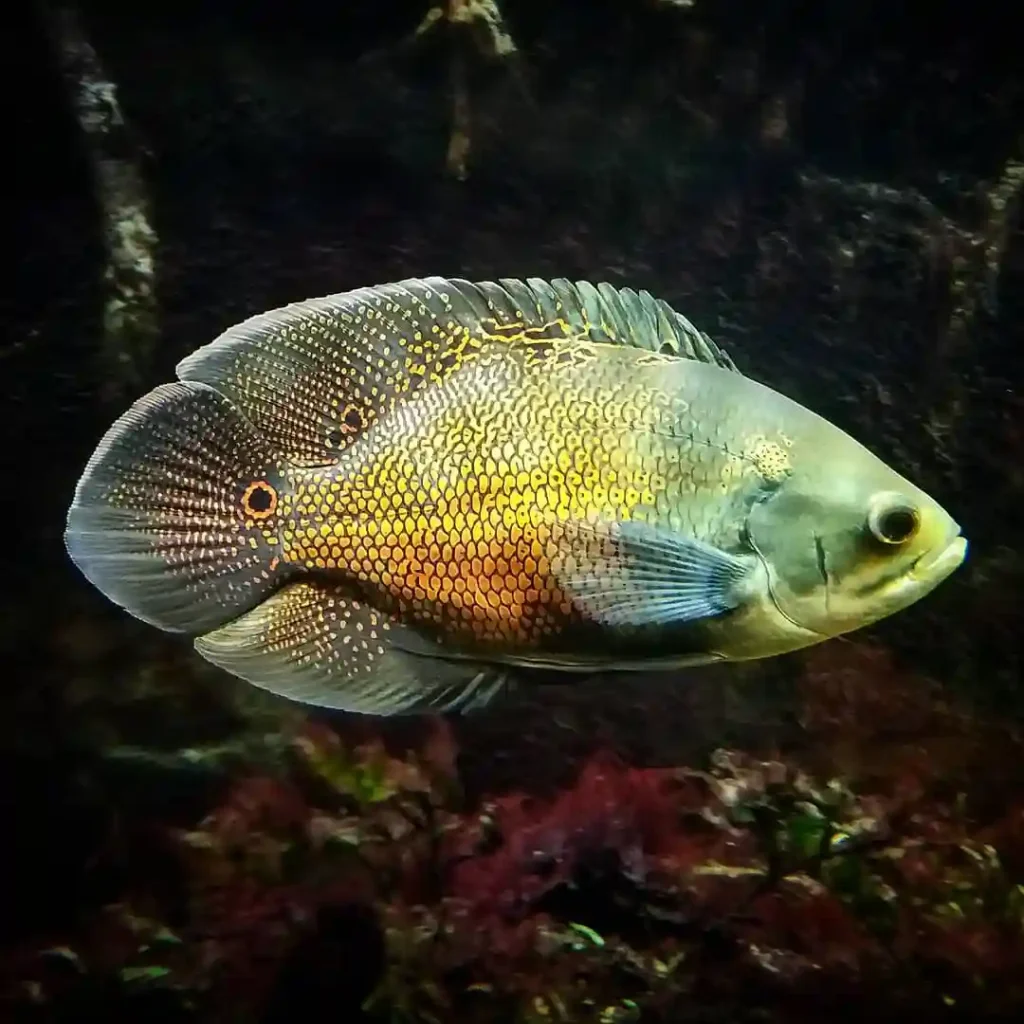
Wild Oscars are as close as you’ll get to the species in its natural Amazon habitat. Their colors are less flashy — usually dark brown or black with patches of orange or red around the tail base and flanks. You’ll often see a distinctive eyespot (ocellus) near their tail, which helps deter predators in the wild.
Because they haven’t been selectively bred for extreme traits, Wild Oscars are often considered more robust and natural in behavior. Some aquarists even prefer them for their authenticity and hardiness.
Why Choose a Wild Type?
- Displays more natural Oscar behavior
- Often hardier than heavily bred varieties
- Pairs well with Amazon-style tanks with driftwood and leaves
💡 Pro Tip: Recreate a riverbed vibe with soft sand, smooth wood, and leaf litter to help them feel like they’re back in the Amazon.
FAQS
1. Do different Oscar colors affect their behavior?
Not really. Most behavior differences come down to individual personality, not color type. However, some owners say Tigers and Reds are more outgoing, while Veil Tails or Wild Oscars might act a little calmer — but this isn’t a hard rule.
2. Can Oscar fish change color as they grow?
Yes. Many Oscars, especially Tigers and Reds, develop deeper colors or more defined patterns with age. Stress, poor water quality, or a bland diet can also cause temporary fading — but with care, their color often bounces back.
3. Which Oscar fish type grows the biggest?
All Oscar varieties grow to similar sizes — usually 12 to 14 inches in home aquariums. Size is more influenced by genetics, diet, and tank size than the color type.
4. Are Veil Tail Oscars harder to care for?
A little. Their long, flowing fins can be torn by sharp décor or strong filter flow. They also need more open swimming space and gentler tankmates to avoid fin damage.
5. Why is my Oscar’s color fading?
Common causes include stress, low-quality food, dirty water, or poor lighting. Check your water parameters and consider adding color-enhancing foods like shrimp, spirulina, or krill.
6. Are rare types like Blue or Copper Oscars worth the extra cost?
If you love their unique look and are willing to maintain top water quality, yes. Just be aware that their colors may vary and they sometimes require more care than standard Tiger or Red Oscars.
7. Can I mix different Oscar fish types in one tank?
Yes, but only in a large tank (125+ gallons). Oscars are territorial, so you’ll need plenty of space and hiding spots to reduce aggression — especially during feeding or when establishing dominance.

